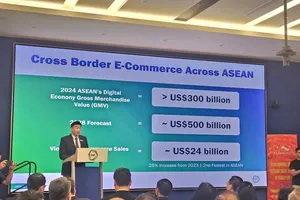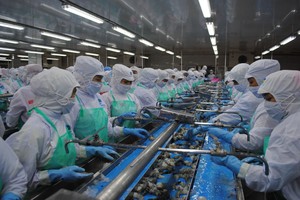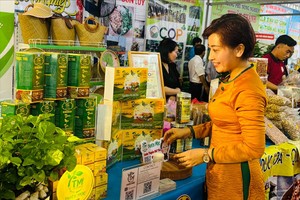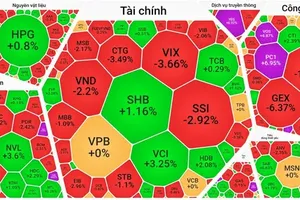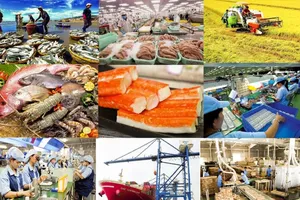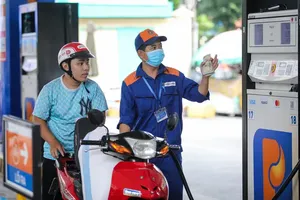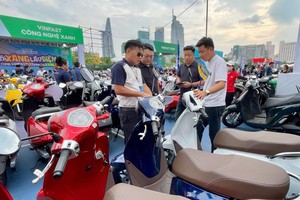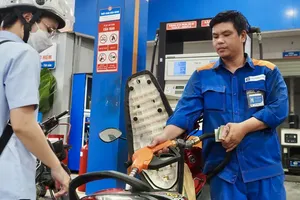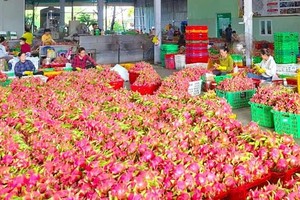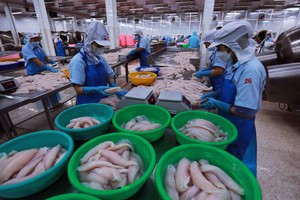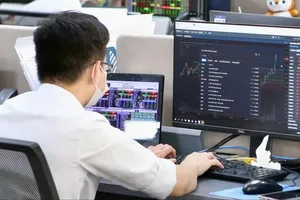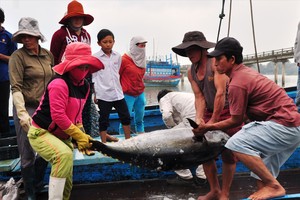 |
The business suffered and Sasco shareholders still remain dissatisfied with the ongoing projects that are lying on hold despite huge investments made over the last so many years.
Recovery from bottom
According to the financial statement of the fourth quarter of 2022 just announced by Sasco, the net revenue reached VND559 bln, and profit after tax reached VND89 bln. In the whole of 2022, Sasco recorded net revenue of VND1,400 bln, up 336 percent compared to the same period in 2021, and profit after tax was VND210 bln, 70 times higher than in 2021. With this result, by the end of the fiscal year 2022, Sasco completed 104 percent of its revenue target and exceeded 156 percent of its full-year profit target.
This was really a very positive result compared to 2021 when profit only reached VND3 bln. According to the explanation given by Sasco, the profit in 2022 was high because business activities at Tan Son Nhat Airport had gradually recovered, compared to the same period last year, and the volume of passengers arriving and departing at domestic and international terminals had increased sharply.
However, if we carefully compare the financial statement, we will see that this growth comes from a low base in 2020 when Vietnam had implemented social distancing measures to prevent the Covid-19 pandemic from spreading. The financial statement also shows a serious decline in the business at that time, with financial revenue dropping by 81 percent to only VND23 bln. This revenue could not cover the administrative expenses of nearly VND43 bln. This is also the reason why Sasco recorded a negative business quarter for the first time since 2016.
Failed project
In 2001, Sasco decided to encroach into the field of resort real estate in Lam Dong province, with the Suoi Hoa project in the Flower Spring resort eco-tourism area. The project covered more than 131 hectares of protected forest land leased to Sasco by the People's Committee of Lam Dong province for constructing this project.
Previously, in August 2008, the People's Committee of Lam Dong Province had recovered 131 hectares of forest land to lease to Sasco to implement the above project. After being granted an investment certificate by Lam Dong province, a certificate of land use rights, and a decision to lease forest lands with Lam Vien Special Forest Management Board, Sasco completed a detailed planning project.
However, the project could not be implemented for a long time due to 6.4 hectares of protective forest land in dispute. Earlier, the Government Office announced the decision of the Prime Minister at a conference on solutions for sustainable forest restoration in the Central Highland area. According to the announcement, the Prime Minister did not agree to change the purpose of using 2.25 million hectares of existing natural forests for other purposes, including works and projects that had been approved but had not been implemented.
By October 2017, after reviewing a number of projects related to forests and forest land in Lam Dong province, the Government Office informed Sasco to continue to implement the project. After that, the People’s Committee of Lam Dong Province assigned departments and agencies to guide Sasco to implement project procedures and guide the application file for adjustment of the Suoi Hoa project.
The project implementation is still very difficult, especially in calling for further investment capital. Between 2019 to 2020 period, Sasco organized three invite bids for the Suoi Hoa project. The first time the bid had to be canceled because there were no bidders, and the second time Sasco canceled the bid because all the proposals of participating bidders did not meet the necessary requirements. Currently, Suoi Hoa is still a slow-moving project in Lam Dong province and is in danger of being withdrawn.
Previously, the Government Inspector had sent a notice on the observance of policies and laws on management and use of capital and assets, equitization, divestment, and restructuring of ACV, also mentioning mistakes in this project. The announcement said that Sasco was leased by the People's Committee of Lam Dong province with more than 131 hectares of forest land to protect the environment and landscape for the project of the Flower Spring eco-tourism resort but had not implemented it.
The project has not yet undergone tax exemption and reduction procedures but has been issued a document by the Tax Department of Dalat City and Lam Dong province to exempt land use fees, resulting in a loss of more than VND1.5 bln for state budget revenue.
Exclusive rights
At the end of 2021, the shareholder structure of Sasco included the state shareholder, Vietnam Airports Corporation ACV with 49.07 percent holding, and three strategic shareholders who were all public companies, namely, a company belonging to Johnathan Hạnh Nguyen which includes the Inter-Pacific Import Export Company Limited (IPP), the Duy Anh Fashion and Cosmetics Company Limited (DAFC), and the European Fashion and Cosmetics Company Limited (ACFC).
With the support of Vietnam Airports Corporation ACV, Sasco has many competitive advantages, especially the high monopoly in duty-free sales at the airport which has the largest number of passenger turnover in the country. However, Sasco is currently dominated by the great family of Johnathan Hanh Nguyen. This giant personality currently holds the position of Chairman of Board of Directors of Sasco with a total ownership rate of 45.26 percent. Ms. Le Hong Thuy Tien, the wife of Mr. Johnathan Hanh Nguyen, is also a member of the Board of Directors of Sasco.
Johnathan Hanh Nguyen's family is well known in the business of luxury goods, but the actual airport service is the main source of income with hundreds of billions of dongs earned each year. In its heyday, Sasco was considered the goose that lay golden eggs. For instance, in 2019, this giant family received VND90 bln from Sasco dividends. In a recent announcement, Sasco plans to pay a dividend in 2022 at the rate of 10 percent. With this payment, Johnathan Hanh Nguyen's family is expected to earn nearly VND60.

